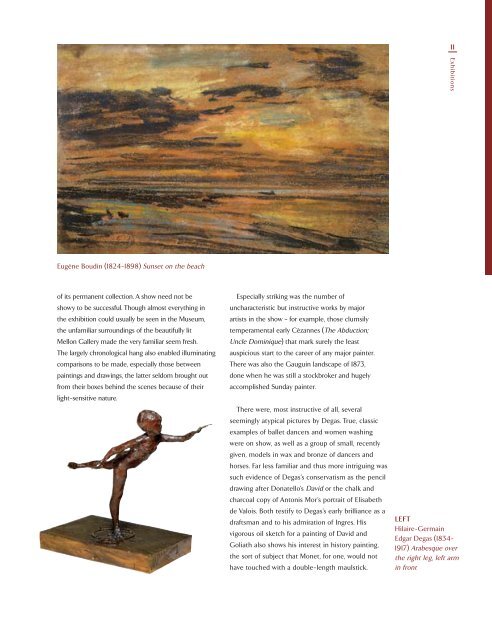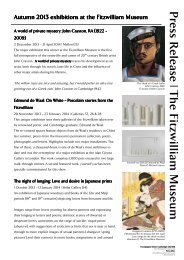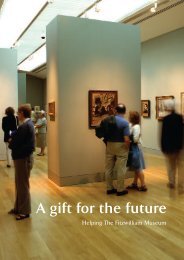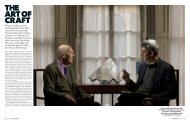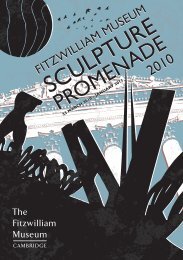The Fitzwilliam Museum - University of Cambridge
The Fitzwilliam Museum - University of Cambridge
The Fitzwilliam Museum - University of Cambridge
You also want an ePaper? Increase the reach of your titles
YUMPU automatically turns print PDFs into web optimized ePapers that Google loves.
Eugène Boudin (1824-1898) Sunset on the beach<br />
<strong>of</strong> its permanent collection. A show need not be<br />
showy to be successful. Though almost everything in<br />
the exhibition could usually be seen in the <strong>Museum</strong>,<br />
the unfamiliar surroundings <strong>of</strong> the beautifully lit<br />
Mellon Gallery made the very familiar seem fresh.<br />
<strong>The</strong> largely chronological hang also enabled illuminating<br />
comparisons to be made, especially those between<br />
paintings and drawings, the latter seldom brought out<br />
from their boxes behind the scenes because <strong>of</strong> their<br />
light-sensitive nature.<br />
Especially striking was the number <strong>of</strong><br />
uncharacteristic but instructive works by major<br />
artists in the show – for example, those clumsily<br />
temperamental early Cézannes (<strong>The</strong> Abduction;<br />
Uncle Dominique) that mark surely the least<br />
auspicious start to the career <strong>of</strong> any major painter.<br />
<strong>The</strong>re was also the Gauguin landscape <strong>of</strong> 1873,<br />
done when he was still a stockbroker and hugely<br />
accomplished Sunday painter.<br />
<strong>The</strong>re were, most instructive <strong>of</strong> all, several<br />
seemingly atypical pictures by Degas. True, classic<br />
examples <strong>of</strong> ballet dancers and women washing<br />
were on show, as well as a group <strong>of</strong> small, recently<br />
given, models in wax and bronze <strong>of</strong> dancers and<br />
horses. Far less familiar and thus more intriguing was<br />
such evidence <strong>of</strong> Degas’s conservatism as the pencil<br />
drawing after Donatello’s David or the chalk and<br />
charcoal copy <strong>of</strong> Antonis Mor’s portrait <strong>of</strong> Elisabeth<br />
de Valois. Both testify to Degas’s early brilliance as a<br />
draftsman and to his admiration <strong>of</strong> Ingres. His<br />
vigorous oil sketch for a painting <strong>of</strong> David and<br />
Goliath also shows his interest in history painting,<br />
the sort <strong>of</strong> subject that Monet, for one, would not<br />
have touched with a double-length maulstick.<br />
11<br />
Exhibitions<br />
LEFT<br />
Hilaire-Germain<br />
Edgar Degas (1834-<br />
1917) Arabesque over<br />
the right leg, left arm<br />
in front


